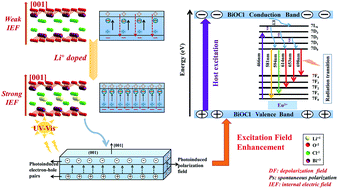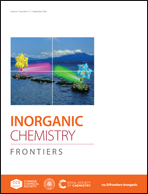A new strategy of interlayer doping of Li ions for the photoluminescence enhancement of Eu3+-doped bismuth oxychloride layered semiconductors†
Abstract
Lattice modification by Li+ doping has been an effective method to manipulate the optical property of lanthanide-doped phosphors, but it lacks an understanding for the highly anisotropic layered host connected by van der Waals forces. In this work, based on BiOCl layered crystals prepared by the solid-state method, we systematically studied the doping mechanism of Li+ ions and its effects on the luminescence properties of Eu3+ activators. The experiment and calculation results indicated that high-concentration Li+ ions can be incorporated into the lattice interlayer by van der Waals forces rather than into substitutional or interstitial sites. Moreover, Li+ ion dopants greatly decrease the crystallinity of BiOCl samples but improve their interlayer electrostatic potential and spontaneous internal electric field (IEF). When the doping concentration increased to 30% moles, the emission intensity of Eu3+ ions under host excitation is enhanced by at least 5 times, accompanied with the prolonged decay time. With the interlayer doping of Li+ ions, the local field effect and photocarrier separation role of the enhanced IEF are responsible for the special photoluminescence properties of Eu3+ ions. The results of this paper not only contribute to understand the optical and structural properties of the layered phosphor system but also open up new ideas for the construction and design of efficient photonic materials.



 Please wait while we load your content...
Please wait while we load your content...